The Woman's Christian Temperance Union (WCTU) is an international temperance organization. It was among the first organizations of women devoted to social reform with a program that "linked the religious and the secular through concerted and far-reaching reform strategies based on applied Christianity." It plays an influential role in the temperance movement. Originating among women in the United States Prohibition movement, the organization supported the 18th Amendment and was also influential in social reform issues that came to prominence in the progressive era.

Frances Elizabeth Caroline Willard was an American educator, temperance reformer, and women's suffragist. Willard became the national president of Woman's Christian Temperance Union (WCTU) in 1879 and remained president until her death in 1898. Her influence continued in the next decades, as the Eighteenth and Nineteenth Amendments to the United States Constitution were adopted. Willard developed the slogan "Do Everything" for the WCTU and encouraged members to engage in a broad array of social reforms by lobbying, petitioning, preaching, publishing, and education. During her lifetime, Willard succeeded in raising the age of consent in many states as well as passing labor reforms including the eight-hour work day. Her vision also encompassed prison reform, scientific temperance instruction, Christian socialism, and the global expansion of women's rights.

Marie Caroline Brehm was an American prohibitionist, suffragist, and politician. The Head of the suffrage department for the Woman's Christian Temperance Union (WCTU), she was a key figure in the Prohibition Party and Presbyterian Church, active in both local and national politics, and an advocate of reform laws. Twice she was appointed by the President to represent the United States at the World's Anti-Alcoholic Congress in Europe. Additionally, she was the first woman to run for the Vice President of the United States after the 19th amendment granted women the right to vote.

Martha McClellan Brown was a lecturer, educator, reformer, newspaper editor, and major leader in the temperance movement in Ohio.

Lillian M. N. Stevens (1843–1914) was an American temperance worker and social reformer, born at Dover, Maine. She helped launch the Maine chapter of the Woman's Christian Temperance Union (W.C.T.U.), served as its president, and was elected president of the National W.C.T.U. after the death of Frances Willard. Stevens also served as Editor-in-chief of the W.C.T.U.'s organ, The Union Signal.
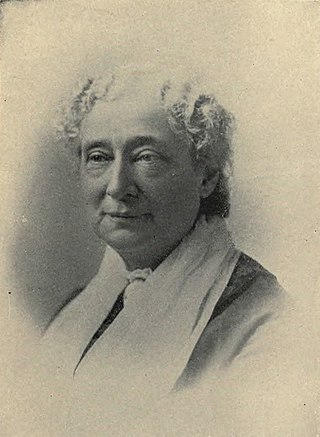
Zerelda Gray Sanders Wallace was the First Lady of Indiana from 1837 to 1840, and a temperance activist, women's suffrage leader, and inspirational speaker in the 1870s and 1880s. She was a charter member of Central Christian Church, the first Christian Church in Indianapolis, Indiana. Her husband was David Wallace, the sixth governor of Indiana; Lew Wallace, one of her stepsons, became an American Civil War general and author.

Mary Greenleaf Leavitt was an educator and successful orator who became the first round-the-world missionary for the Woman's Christian Temperance Union (WCTU). Setting out on virtually non-stop worldwide tours over a decade, she "went to all continents save Antarctica," where she crusaded against alcohol and its evils including domestic violence; and advocated for women's suffrage and other equal rights such as higher education for women. In 1891 she became the honorary life president of the World's WCTU.

Sarah "Annie" Turner Wittenmyer was an American social reformer, relief worker, and writer. She served as the first President of the Women's Christian Temperance Union from 1874 to 1879. The Iowa Soldiers' Orphans' Home was renamed the Annie Wittenmyer Home in 1949 in her honor.
The Woman's Temperance Publishing Association (WTPA) was a non-commercial publisher of temperance literature. Established in 1879 in Indianapolis, Indiana during the national convention of the Woman's Christian Temperance Union (WCTU), it was a concept of Matilda Carse, an Irish-born American businesswoman, social reformer and leader of the temperance movement.

In the United States, the temperance movement, which sought to curb the consumption of alcohol, had a large influence on American politics and American society in the nineteenth and twentieth centuries, culminating in the prohibition of alcohol, through the Eighteenth Amendment to the United States Constitution, from 1920 to 1933. Today, there are organizations that continue to promote the cause of temperance.
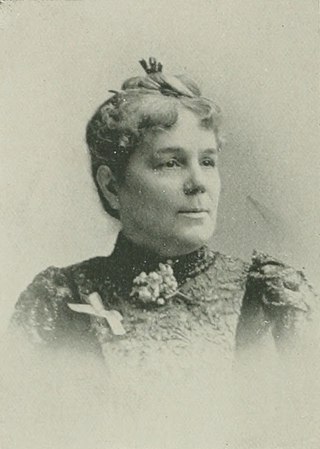
Mary Towne Burt was a 19th-century American temperance reformer, newspaper publisher, and benefactor from Ohio. Burt was identified with temperance work nearly all her life. She was the first president of the Auburn, New York branch of the Women's Christian Temperance Union, and beginning in 1882, served as president of the New York State Society of the Union. In 1875, she became the publisher, and subsequently the editor, of Our Union, the organ of the society, and in 1878–80 was the corresponding secretary of the National Union. For several years, Burt had charge of the legislative interests of the union, and several laws for the protection of women and young girls resulted from her efforts.

Caroline Brown Buell was an American activist who lectured and wrote on behalf of temperance and suffrage. She served as the assistant recording secretary (1878–80), corresponding secretary (1880–93), and a member of the Our Union publication committee (1876–83) of the National Woman's Christian Temperance Union (WCTU); as well as the president (1904) and corresponding secretary (1875–86) of the Connecticut WCTU. She also originated the plan of the Loyal Temperance Legion, the children's society of the WCTU. Buell wrote extensively for temperance publications, and other papers and magazines. She made her home in East Hampton, Connecticut.
The Temperance movement began long before the Eighteenth Amendment to the United States Constitution was introduced. Across the country different groups began lobbying for temperance by arguing that alcohol was morally corrupting and hurting families economically, when men would drink their family's money away. This temperance movement paved the way for some women to join the Prohibition movement, which they often felt was necessary due to their personal experiences dealing with drunk husbands and fathers, and because it was one of the few ways for women to enter politics in the era. One of the most notable groups that pushed for Prohibition was the Woman's Christian Temperance Union. On the other end of the spectrum was the Women's Organization for National Prohibition Reform, who were instrumental in getting the 18th Amendment repealed. The latter organization argued that Prohibition was a breach of the rights of American citizens and frankly ineffective due to the prevalence of bootlegging.
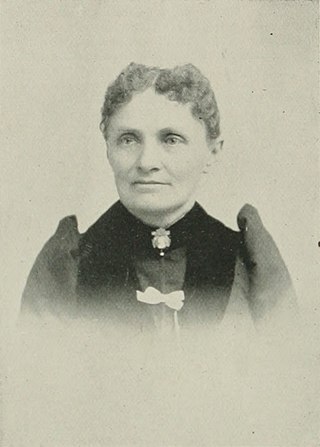
Ellen A. Dayton Blair was an American social reformer and art teacher.
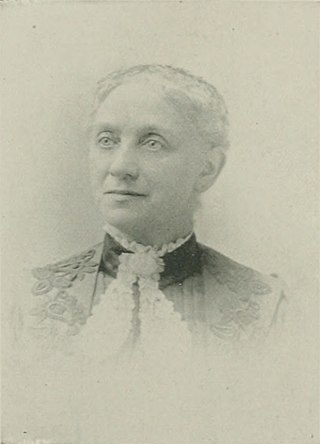
Mary Jane Aldrich was an American temperance reformer, lecturer, and essayist of the long nineteenth century. She served as vice-president of the National Woman's Christian Temperance Union (WCTU) and president of the Iowa union. At the time of the division in the ranks of the WCTU, Aldrich, with the Iowa union, adhered to the non-partisan temperance work, and became evangelistic secretary of the Non-Partisan National Woman's Christian Temperance Union. As a temperance worker, she was characterized as sanguine and practical. As a speaker, she was bright, forceful, entertaining and logical. She was the author of "Church and Sunday School Temperance Work" (1898).
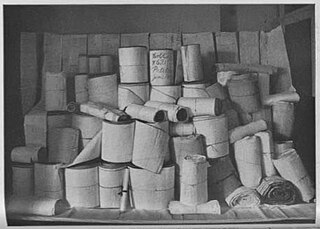
The Polyglot Petition for Home Protection was the first world-wide proclamation against the manufacturing and international trade in liquor and drugs as well as the prohibition of legalised vice. It served as a first major campaign to raise public awareness of the need for international agreements on controls for opium and its derivatives.
The First Woman's National Temperance Convention was a founding event in the establishment of the Woman's Christian Temperance Union (WCTU).

Women's Christian Temperance Union of New Zealand is a non-partisan, non-denominational, and non-profit organization that is the oldest continuously active national organisation of women in New Zealand. The national organization began in 1885 during the visit to New Zealand by Mary Clement Leavitt, the first world missionary for the Woman's Christian Temperance Union. The WCTU NZ was an early branch of the World Woman's Christian Temperance Union and a founding affiliate of the National Council of Women of New Zealand. Men may join the WCTU NZ as honorary members.

The Union Signal is a defunct American newspaper. It was the organ of the National Woman's Christian Temperance Union (N.W.C.T.U.), at one time, the largest women's organization in the United States. Established in 1874 aa The Woman's Temperance Union, it was renamed in 1877 as Our Union. When Our Union merged with another temperance paper, The Signal, in 1883, the organ's name was changed to The Union Signal. Published in Chicago, Illinois, it focused on the woman's temperance movement in the U.S. Initially, a weekly 16-page illustrated newspaper, it shifted location and publishing schedule before it ceased publication in 2016. The last edition of the N.W.C.T.U.'s quarterly journal, titled The Union Signal, was published in 2015, the main focus of which was current research and information on drugs.
The Third Annual Meeting of the National Woman's Christian Temperance Union (N.W.C.T.U.) was held in Newark, New Jersey, October 25-28, 1876. Twenty-two State unions were represented at this meeting, and local unions were reported as having been formed for the first time in Tennessee, Louisiana, and Arkansas, preparatory to State organizations. No officer of the N.W.C.T.U. received a dollar for services or traveling expenses during the year. Robert's Rules of Order was adopted as the parliamentary authority for the N.W.C.T.U.




















